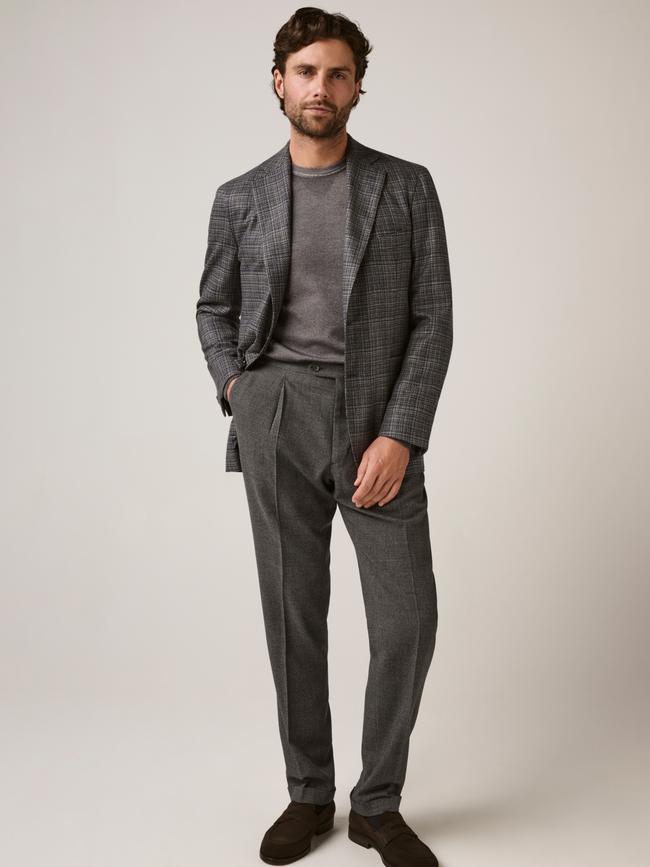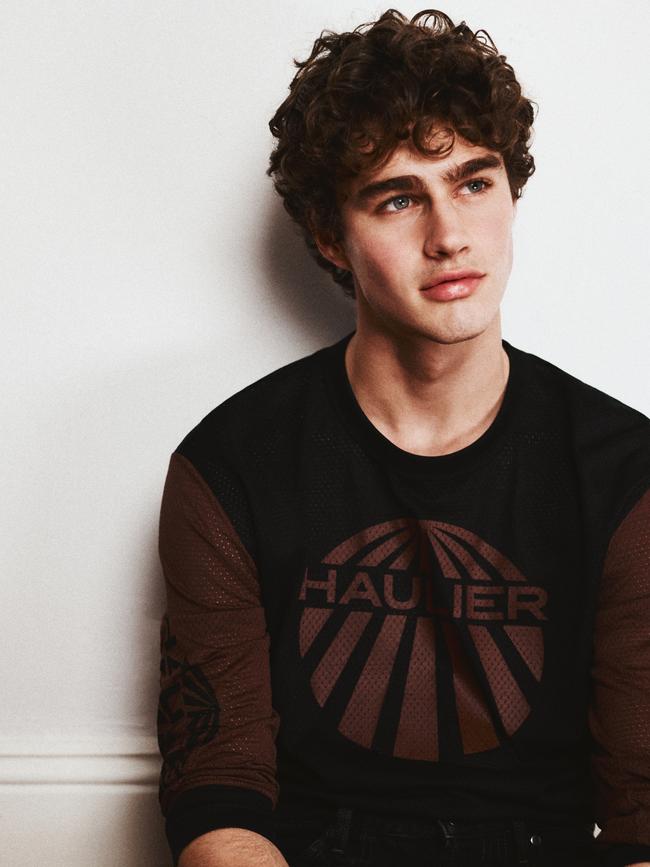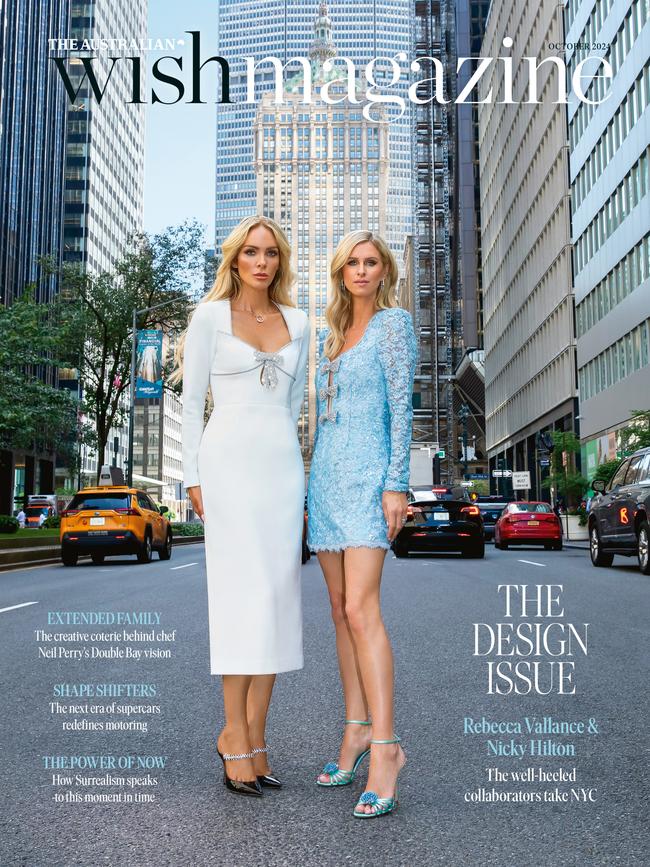Your guide to the new rules of what to wear to the office this summer
Australian tailors are putting a fresh spin on menswear, but some nine-to-five rules still apply.

Given you’re more likely to see a tie on a runway in Paris than in the Monday morning team strategy meeting, or that nobody can decide on the acceptable length of shorts, or if you can even wear them in the office, you could forgive men for feeling flummoxed when it comes to their wardrobes.
Yet Melbourne-based designer and Savile Row-trained tailor Christian Kimber – who just opened his first flagship in Melbourne’s CBD – says Australian men have never been so open to fashion. What’s more, he says, they’re confident enough to hone an original take on style.
“I mean, clearly it’s climate focused,” says the UK-born Kimber on the question of what Australian men want in their wardrobes now. Especially when it comes to the particularly vexing topic of what to wear to the modern workplace.
“It’s about finding fabrics and textiles we can use that hit the right note for us. Maybe it’s using lighter materials, unlining things, building things so you can layer up and down as opposed to very heavy garments, using colours of Australian landscapes that we have traditionally always loved anyway … and [embracing] natural fibres. For us, it’s about creating clothing that really matches our client’s lifestyle.”

Following the lives of his clients has proven a successful strategy in building the business. Kimber himself can often be found on the shop floor (“I want to be with the customer and know what they need”) and has tailors working in each of his three Melbourne locations. Kimber’s most recognisable pieces are his elegant merino polos, and the use of unexpected hues such as espresso brown for textured silk-blend suiting. “‘Who is our customer, what do they want and who’s the kind of guy that’s coming in again every month? Where’s our guy going this summer? OK, he’s going to Aspen and then he’s going to Mornington, then he’s going to Sydney and Paris’,” says Kimber of his brand’s quest to know its base by focusing on the lives of clients. “And since we’ve leant into him, it’s been easier for us.” As for the demographic, Kimber says it tends to run from 35 to 90. Their oldest – and surely most dapper – client is aged 92.
When it comes to tailoring, an especially fraught category in a time of hybrid work and the general casualisation of attire, Kimber says men tend to shop in “looks”. By the time they get to him they already have the tailoring basics.
What the Christian Kimber brand offers, adds Renuka Kimber – the designer’s wife, brand co-founder and overseer of strategy for the label – is something original.
“It’s not about that kind of very structured, restrictive-colour, rules-based dressing,” she says. “It’s about taking a hand in their creative process with Christian, and then also choosing the most beautiful fabrications to build something that’s truly unique and fills a place in your wardrobe, rather than shopping for the sake of it.”

Patrick Johnson, founder of P.Johnson tailors, and Jeremy Hershan, founder of menswear label Haulier, who also trained as a tailor on London’s Savile Row and has worked for Kris Van Assche, Dunhill and R.M. Williams, joined forces last month for a collaboration. They’ve long referred clients to each other, so it made perfect sense.
“It’s a tiny landscape in Australia, and I think in menswear specifically,” Johnson says. “And also in menswear where people are doing something that’s quite different. There’s quite a few menswear brands here, but often it’s more the mainstream stuff. And I’ve always loved that Jeremy just does his own thing.
“There’s real purity to what he does … he sends clients to us, we send them to him, and his client is not that far different from us. We haven’t done a sale before, and we did a sample sale a couple of weeks ago together … which was hilarious and so much fun. There were clients that shop both, and clients that hadn’t heard of the other. I think we’ve got a lot more crossover now,” Johnson adds.
The P.Johnson x Haulier collaboration, which includes a motocross T-shirt and a cap, typifies how both menswear designers view supporting and nurturing other brands in the industry as hugely important. Johnson notes the global success of Australian womenswear brands such as Zimmermann as an example of what’s possible for Down Under fashion design. “The more success there is, the bigger voice we have, and Australia’s the best country in the world so we should have a really good design scene,” Johnson says. “And you see in women’s, a few brands are broken through – Zimmermann being the obvious one – but there’s others. In men’s, it just hasn’t really happened yet. And I think it’s going to be a matter of time before it does.”
Both Johnson and Hershan are observing a willingness by men to experiment, and to pick and mix pieces for their wardrobes.
A key influence on this, says Johnson, is the daily scroll. “I think we’re very well-travelled, but the advent of social media allowed Australian men to look at a big range of different people and see how they dress,” he says. “They can see how a 70-year-old guy in Milan dresses, and he wears his red sweater really well, or how a young kid in New York dresses, so they can kind of find their groove.


“I think it’s been a big influence. You get bad with that, and you get good with that, but overall there’s been a huge improvement in terms of guys feeling now that they can really take pride in the way they dress and not be embarrassed about it. And there was a bit, culturally, a little bit of embarrassment [in wanting to dress well].”
Hershan, who spent nine years working overseas before starting his label, agrees. “I think there’s a much broader outlook, I guess, the way that people are looking at things these days and they’re exposed to so much. Part of the intention, certainly, behind my brand is to try and fill that void a little bit,” he says. “I really felt there were so few options here for homegrown menswear brands. I think in the past 10 years the landscape has certainly changed
a lot, and it’s nice to watch that continue to evolve.”
As for the new rules of tailoring, both have ideas. Including, at least for Johnson, that shorts don’t belong in the office and that, mostly, people still like a little guidance on what to wear. “I think it depends on your office … legs out is for the weekend, but maybe that opinion is not that popular?” he says.
“But it is changing in some respects. Definitely the casualisation of the wardrobe is happening, the tie in some offices still has a place but overall, you’ll see it is definitely fading out, and in some ways that has increased its power. We see the trend in our New York and London and Australian showrooms … interestingly, a lot of the biggest financial institutions in New York are actually going more formal.

“They tried to go down that track of going, ‘Oh, let’s pretend we’re a fintech company and not actually a bank’ … let’s be cool and let’s do beanbags and sausages. Now that’s flipped. They’re going, ‘No, no, we want our people dressed well and presentable’.”
Matt Jensen, chief executive of menswear label M.J.Bale, says this new office “uniform” allows for more choice and autonomy. “When somebody chooses to wear tailoring these days it says a lot about how they see themselves, and what kind of story they want to tell the world about themselves,” he says. “Our progressive customers are definitely experimenting more with how they dress, usually in the form of silhouettes. They’re after more relaxed and comfortable fits, typically with a wider trouser leg or a jacket with more drape. They’re savvy when it comes to fibres.”
Johnson says his lightweight, soft tailoring in linens, cottons and wool blends with open weaves sell particularly well. Indeed, P.Johnson has sold more tailoring in the past five years than ever before.
They’re also doing good numbers in formalwear. It seems when men do dress up now, they really want to dress up. Hershan, for one, is excited to see the return of the tie – even if it remains niche, as a conscious power move or an expression of personal style. “I think out there in the world it’s getting more and more casual. I think there is a desire to really dress up when the opportunity is there. And that’s what I’ve also really loved to see,” he says.
The new essentials? All agree they’re a little like the old ones, but modernised by mixing and matching and being open to fabrics and cuts. “I think it’s those classic wardrobe staples, isn’t it?” says Hershan. “It’s great denim – rigid denim, no stretch please – and beautiful shirting and a nice structured or unstructured jacket. I think those are the kind of evergreen items that you’re always going to go back to.”
“You should have a suit in your wardrobe and if you’re going to do that, you’re going to wear it as
a separate, so maybe start with a navy blue, it’s really nice in the Australian sun,” adds Johnson. “Have a nice, tailored pair of trousers, have a beautiful shirt. And then, for me, you can kind of freestyle. I think every guy should have a dinner suit as well – of course we’re going to say that; we make dinner suits – but maybe you should be ready if you get invited to a black-tie thing.”
Which is a good rule of thumb for all of us.





To join the conversation, please log in. Don't have an account? Register
Join the conversation, you are commenting as Logout